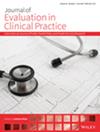Narketpally Syndrome and the Embedding of Contextual Values in Real-Life Patient Pathways
Abstract
Introduction
This commentary illustrates a global patient-centered learning ecosystem, anchored in Narketpally, that adopts a syndromic approach to medical education and research. Rooted in the etymological origins of ‘syndrome’ (“together we flow”), this approach reframes medical research as a collective, contextual response to individual patient needs.
Methods
The structure of the paper is intentionally modeled as a team-based learning exercise, grounded in our prior Web 2.0–based cognitive tools: CBBLE (Case-Based Blended Learning Ecosystem) and PaJR (Patient Journey Record). These are framed against the conceptual scaffolding provided by three key publications: a framework by Sturmberg et al. and two contrasting commentaries by Greenhalgh and Ioannidis.
Results
Through our ongoing CBBLE–PaJR workflow, thematic learning outcomes emerged in response to these frameworks. Sturmberg's stratified realism helped us recognize how individual patient connections, recorded in our daily practice and online learning portfolios, can drive both contextual learning and meaningful changes in patient outcomes. Greenhalgh's commentary inspired our conceptualization of a ‘wildebeest river crossing value model,’ contrasting population-based efficiency with individual-centered compassion. Ioannidis's critique of methodological rigor highlighted the potential for expanding low-resource, high-impact research through patient-centered designs, particularly in phases 1 and 4 of the clinical trial hierarchy.
Conclusion
Narketpally Syndrome represents more than a metaphor; it signifies a real, evolving ecosystem of knowledge, reflection, and practice. It suggests that research must be reimagined as a river of collective cognition, flowing across diverse clinical contexts, with each patient seen as a site of inquiry. Such an approach enables the integration of contextual values into real-life patient pathways. In contrast to the dominant forest-canopy model of population medicine, this framework emphasizes the importance of focusing on the roots of each patient that form the ecosystem of patient-centered care.

 求助内容:
求助内容: 应助结果提醒方式:
应助结果提醒方式:


